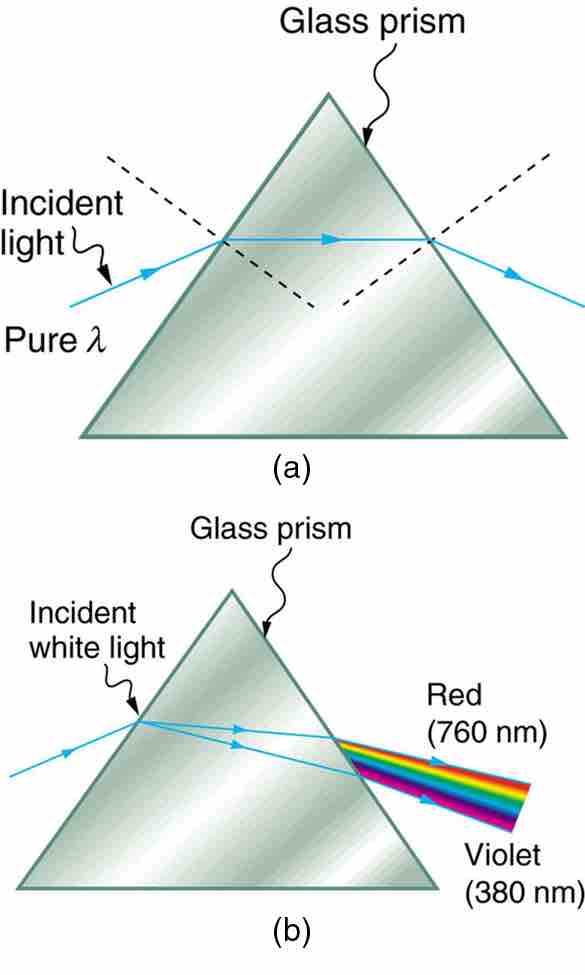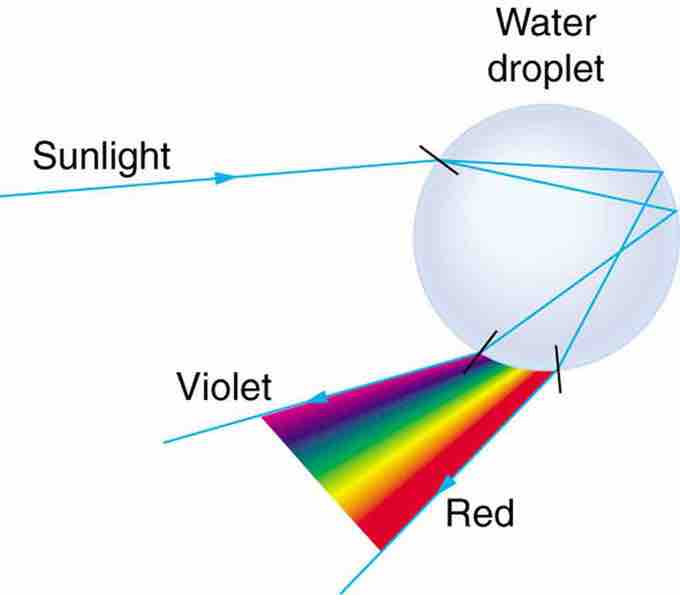The Visible Spectrum
Within the electromagnetic spectrum, there is only a portion that is visible to the human eye. Visible light is the range of wavelengths of electromagnetic radiation that humans can see. For a typical human eye, this ranges from 390 nm to 750 nm. shows this range and the colors associated with it:

The Visible Spectrum
Visible Spectrum, represented linearly
- Violet: 380-450 nm
- Blue: 450-495 nm
- Green: 495-570 nm
- Yellow: 570-590 nm
- Orange: 590-620 nm
- Red: 620-750 nm
As you can see from , these are the colors of a rainbow and it is no coincidence.
Dispersion
Dispersion is the spreading of white light into its full spectrum of wavelengths. How does this happen? The index of refraction is different for every medium that light travels through, as we learned in previous atoms. When a light ray enters a medium with a different index of refraction, the light is dispersed, as shown in with a prism. When white light enters the prism, it spreads. Since the index of refraction varies with wavelength, the light refracts at different angles as it exits, causing the exiting light rays to appear as a rainbow, or as a sequence of decreasing wavelengths, from red to violet.

Light and a Glass Prism
(a) A pure wavelength of light falls onto a prism and is refracted at both surfaces. (b) White light is dispersed by the prism (shown exaggerated). Since the index of refraction varies with wavelength, the angles of refraction vary with wavelength. A sequence of red to violet is produced, because the index of refraction increases steadily with decreasing wavelength.
This same principle can be applied to rainbows. Refer to . Rainbows are not only caused by refraction, like prisms, but also reflection. Light enters a drop of water and is reflected from the back of the droplet. The light is refracted once as it enters the drop, and again as is exits the drop. In water, the refractive index varies with wavelength, so the light is dispersed.

Light and a Water Droplet
Part of the light falling on this water drop enters and is reflected from the back of the drop. This light is refracted and dispersed both as it enters and as it leaves the drop.